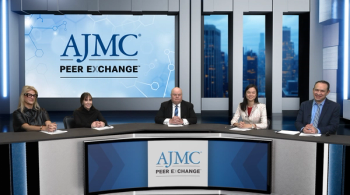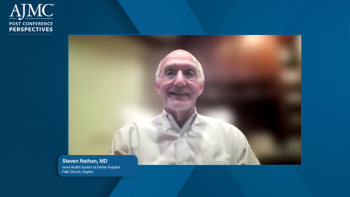
SC Efgartigimod Shows Noninferiority to IV Formulation in gMG
The researchers have detailed their complete findings of subcutaneous (SC) vs intravenous (IV) efgartigimod in generalized myasthenia gravis (gMG) from the phase 3 ADAPT-SC trial and initial findings from the open-label extension of the study, ADAPT-SC+.
The subcutaneous (SC) formulation of efgartigimod is noninferior to the intravenous (IV) formulation of the treatment for generalized
Publishing
The noninferiority of SC efgartigimod was indicated in
In the ADAPT-SC study, 111 patients were randomized to receive once-weekly efgartigimod either subcutaneously at 1000 mg or intravenously at 10 mg/kg for 4 weeks (considered 1 treatment cycle). Patients were then followed for 7 weeks.
Improvements were seen as early as 1 week after just 1 dose of treatment, and maximum improvements were seen at week 4. At 1 week after the first injection, the mean percentage change in total IgG was –40.1% for SC efgartigimod and –39.6% for IV efgartigimod. At eachsubsequent week, levels continued to drop, with a 58.1% reduction for SC efgartigimod and a 63.5% reduction for IV efgartigimod at week 4.
Throughout the study, SC injections could begiven by site staff or by participants and/or their caregivers after undergoing injection training.
“In ADAPT-SC, injections were predominantly administered by site staff; however, participant/caregiver administration, including at-home administration, has been common in ADAPT-SC+: 88% (145/164) of participants in ADAPT-SC+ have been considered to be adequately trained to self-administer efgartigimod PH20 SC, the majority within the first 3 administrations,” described the researchers.“By treatment cycle 3 of ADAPT-SC+, nearly 60% of all participants have been able to self-administer in their own homes.”
The extension study followed 164 patients—who received an additional 6 cycles of treatment—for up to 3 years, showing long-term safety and efficacy of the SC formulation. At the point of data cutoff, with baseline considered week 4, mean change inMyasthenia Gravis Activities of Daily Livingscore was –4.0 at cycle 1, –3.8 at cycle 2, and –4.1 at cycle 3. Like the original ADAPT-SC study, maximum improvement in efficacy measures in the extension study was seen at week 4.
Throughout the study and the extension phase, both formulations of efgartigimod were well tolerated, with most adverse effects being mild to moderate. There were no deaths in ADAPT-SC and 2 deaths reported in the extension study, neither resulting from efgartigimod treatment. One death was a result of metastatic renal cancer and the other,respiratory failure secondary to COVID-19.
Because patients with MG are predisposed to infections, the researchers paid special attention to the adverse events throughout the study.
“Incidence of infections is higher in patients with gMG than in those without the disease, potentially predisposed by use of immunosuppressive treatment,” wrote the researchers.“Importantly, while efgartigimod does reduce total IgG level, it does not lead to complete IgG removal and the reduction is transient, with no impact on other immunoglobulins. Preclinical studies of [neonatal Fc receptor]blockade have shown there is no impact on IgG production and it does not prevent the generation of an immune response to vaccination.”
References
1. Howard JF, Vu T, Li G, et al. Subcutaneous efgartigimod PH20 in generalized myasthenia gravis: A phase 3 randomized noninferiority study (ADAPT-SC) and interim analyses of a long-term open-label extension study (ADAPT-SC+). Neurother. Published online September 2, 2024. doi:10.1016/j.neurot.2024.e00378
2. Argenx announces positive topline phase 3 data from ADAPT-SC study evaluation subcutaneous efgartigimod for generalized myasthenia gravis. News release. Argenx. March 22, 2022. Accessed September 17, 2024.
3. Argenx. Argenx announced U.S. Food and Drug administration approval of VYVGART Hytrulo(efgartigimod alfa and hyaluronidase-qvfc) injection for subcutaneous use in generalized myasthenia gravis. News release. Argenx. June 20, 2023. Accessed September 17, 2024.
Newsletter
Stay ahead of policy, cost, and value—subscribe to AJMC for expert insights at the intersection of clinical care and health economics.






































